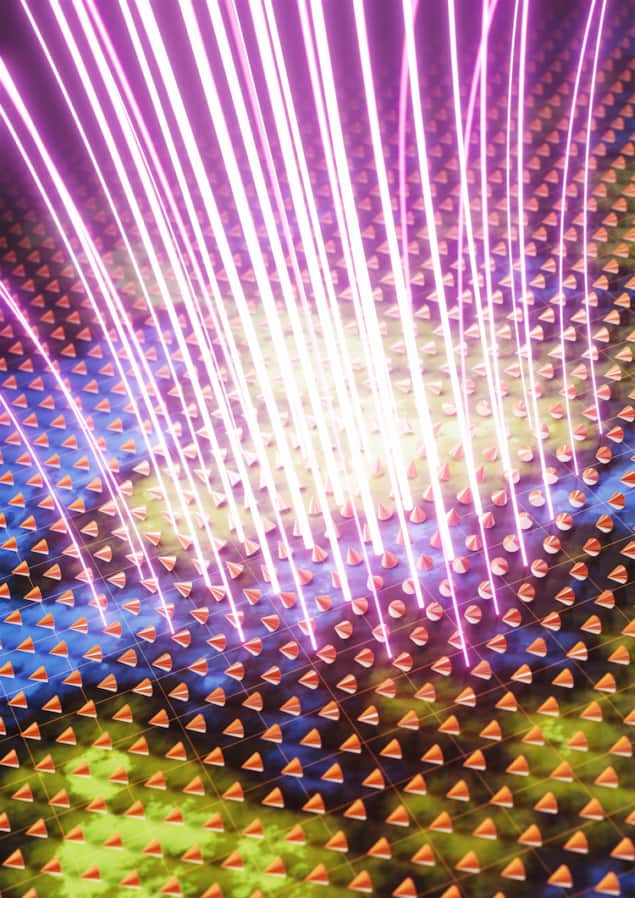
**Ranga Dias’s Contentious Departure: An In-Depth Examination of Superconductivity, Deception, and Consequences**
Ranga Dias, once an emerging figure in superconductivity research, is no longer connected with the University of Rochester, signifying a disreputable shift in what seemed to be a promising scientific career. As reported by *Nature*, the university recently acknowledged that Dias is no longer on its payroll and has severed any ongoing research affiliations. This turnaround follows serious accusations of various forms of scientific misconduct, including data fabrication and plagiarism, which have shaken the scientific realm and raised doubts about some of the most lauded claims in contemporary materials science.
### The Ascent and Decline of a Scientific Icon
From 2020 to 2023, Dias and his research group captured global interest by publishing several papers that proclaimed the discovery of high-temperature superconductors. Superconductivity—the capacity of specific materials to conduct electricity with no resistance—has long represented a “holy grail” in materials science, holding significant potential for energy transmission, magnetic levitation, and quantum computing. Dias’s research aimed to achieve superconductivity at temperatures and conditions far more feasible than ever before, stirring optimism for groundbreaking technologies.
The ramifications of such discoveries extended beyond academia to substantial financial implications. Dias secured millions in research grants, which allowed his team to progress in their innovative work. Additionally, entrepreneurial in nature, Dias established a company named Unearthly Materials to commercialize these alleged advancements, attracting substantial investments from venture capitalists eager about the potential uses of high-temperature superconductivity.
Nonetheless, skepticism pervaded the scientific community. Dias’s assertions faced rigorous examination, particularly given the field’s history of extraordinary claims that lacked replication. As worries grew, several of the team’s notable papers were viewed with suspicion. Over time, journal retractions and institutional investigations unveiled a disturbing trend: accusations of data manipulation and plagiarism.
### The Deterioration: Retractions and Scrutiny
Dias’s career began to decline when numerous independent researchers uncovered discrepancies in his published work. A significant incident included the retraction of a third paper from his group asserting room-temperature superconductivity, which severely damaged his credibility. As concerns escalated, the University of Rochester initiated an investigation, the results of which were incriminating. According to *Nature*, this inquiry determined that Dias had engaged in both data fabrication and plagiarism.
These findings prompted urgent inquiries regarding the validity of Dias’s earlier claims and the millions of dollars his group had received in research funding. Scientists who were originally optimistic about his findings grew increasingly frustrated and disillusioned, pointing out the detrimental effects such misconduct can have on the discipline as a whole.
The scandal’s repercussions reached beyond the university. Journals that had published Dias’s works were criticized for their part in disseminating the dubious findings. The necessary retractions painted a troubling picture concerning the review process amid high-stakes assertions. Peer review, typically reliant on researchers’ good faith, proved inadequate to detect the alleged misconduct at earlier points.
### University Response and Dias’s Exit
Although university officials purportedly recommended dismissal, the University of Rochester chose not to reveal specific information about the termination of Dias’s employment, citing confidentiality concerns. However, the institution confirmed that Dias is no longer an employee and has no associated research activities. These actions seem to cut all formal ties between Dias and the university in light of the controversy.
For his part, Dias has stood by the validity of his work and has yet to address the latest allegations and findings in public.
### Wider Ramifications
The consequences of the Ranga Dias scandal act as a cautionary narrative for the scientific community. Scientific misconduct, especially in high-visibility fields like superconductivity, can lead to extensive repercussions:
1. **Diminished Trust:** Dias’s situation exemplifies how allegations of fraud can undermine public confidence in science. By sullying the reputation of an entire sector, such incidents complicate the quest for legitimate researchers to obtain funding and support.
2. **Peer Review’s Role:** The ordeal has exposed vulnerabilities within the peer-review system. Traditionally, peer review assumes that researchers present data with integrity, yet Dias’s case implies a pressing need for systemic modifications, including mandated data transparency and independent replication of remarkable claims.
3. **Funding and Policy Effects:** Millions of dollars in research funding and private investments flowed into Dias’s endeavors and Unearthly Materials. Such instances raise critical questions regarding the evaluation process of research proposals and funding applications, particularly for assertions promising transformative breakthroughs.
4. **Research Integrity:** For the scientific framework to operate effectively, integrity must be foundational. The Dias saga serves as a sharp reminder of the necessity for ethical conduct and stringent oversight in research.
### The Road Ahead
As Ranga Dias’s